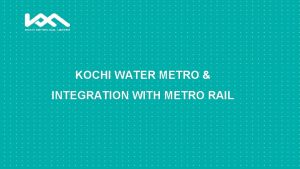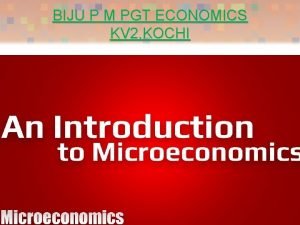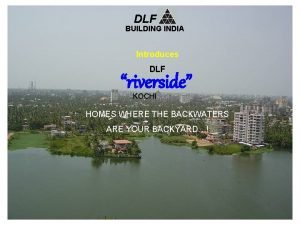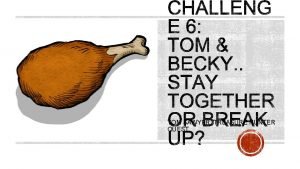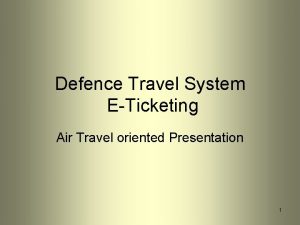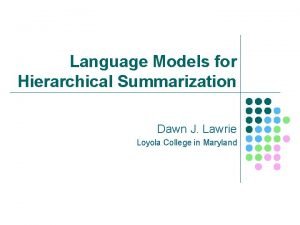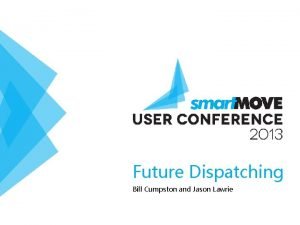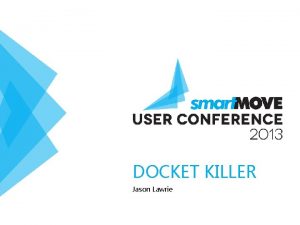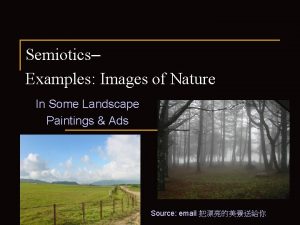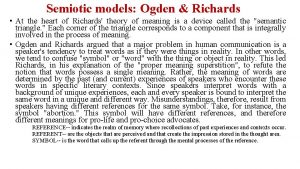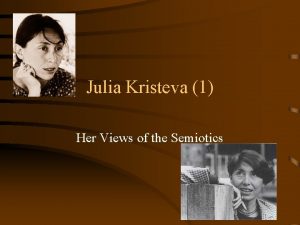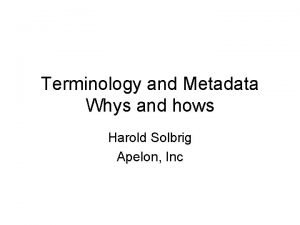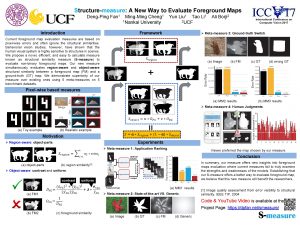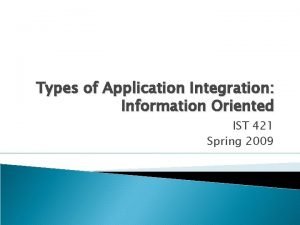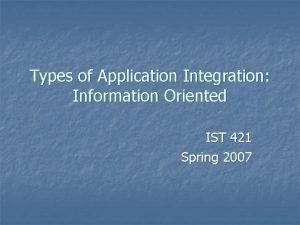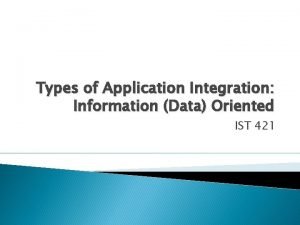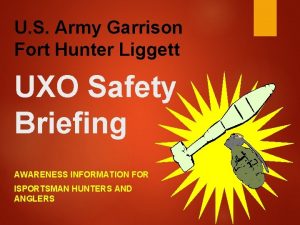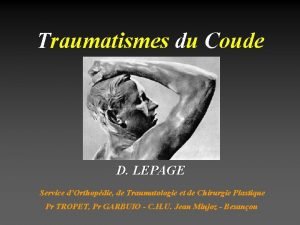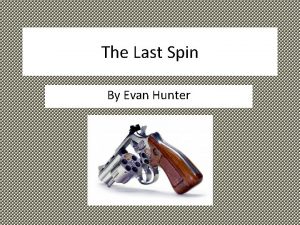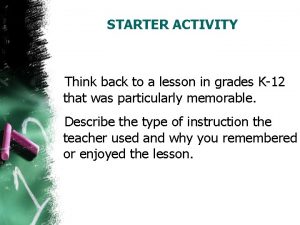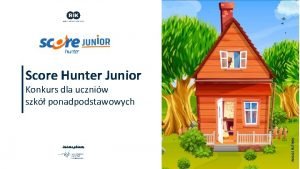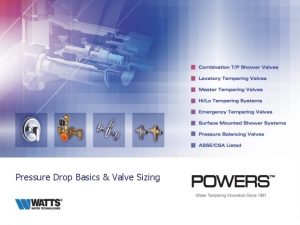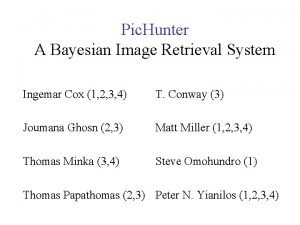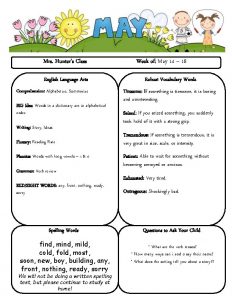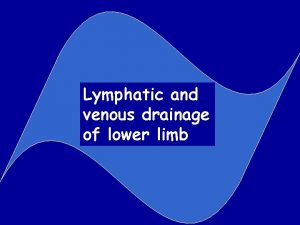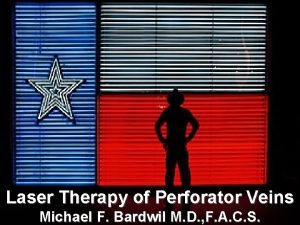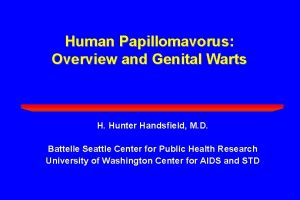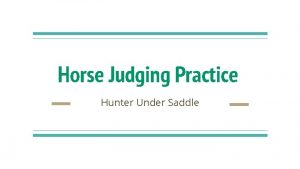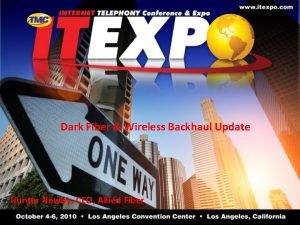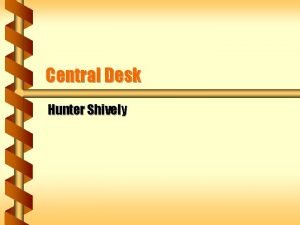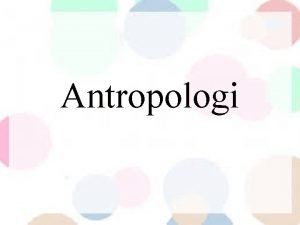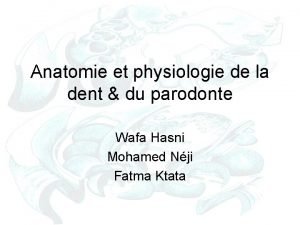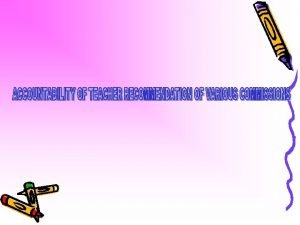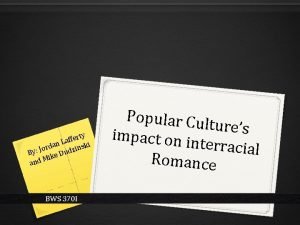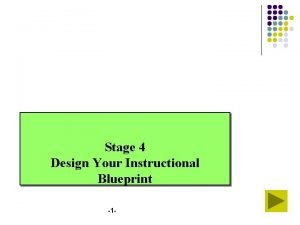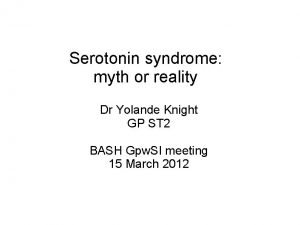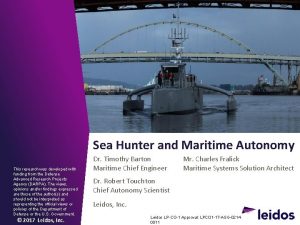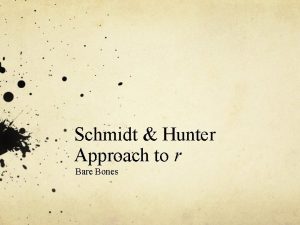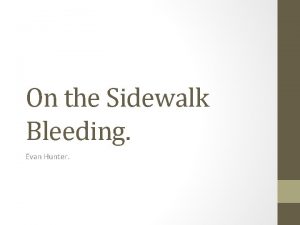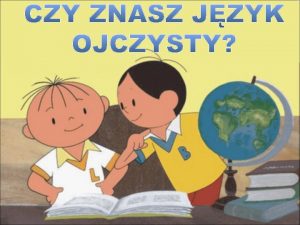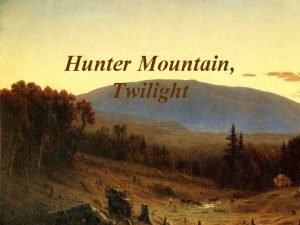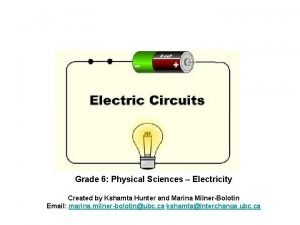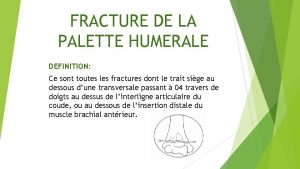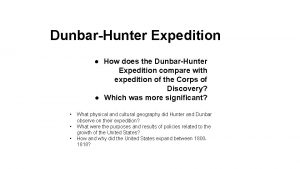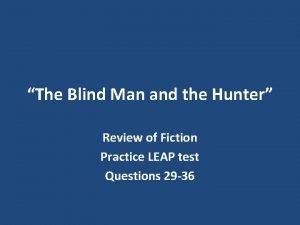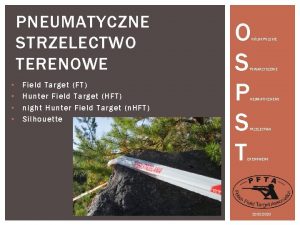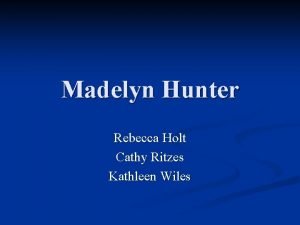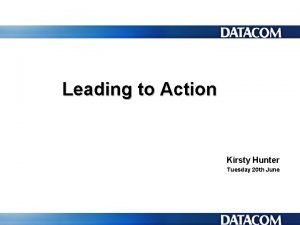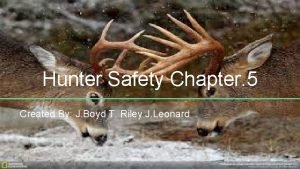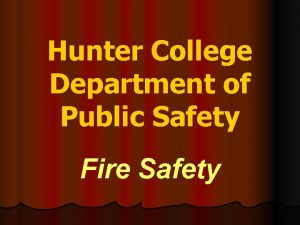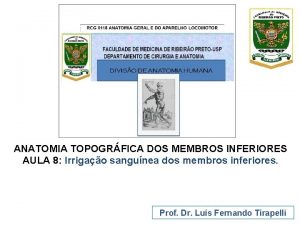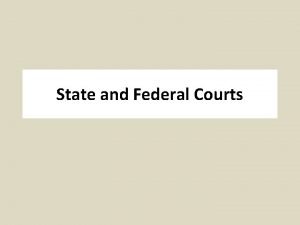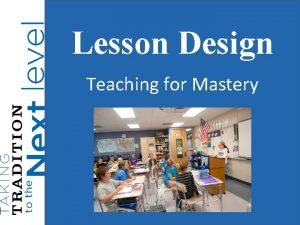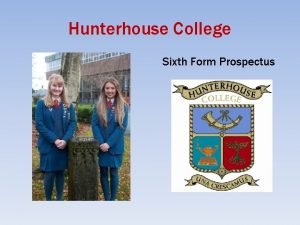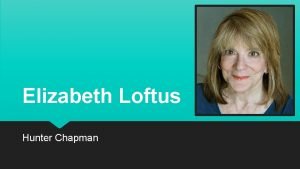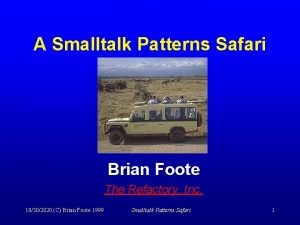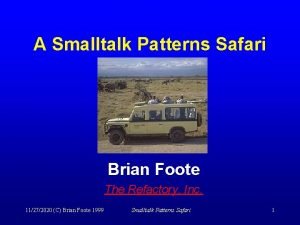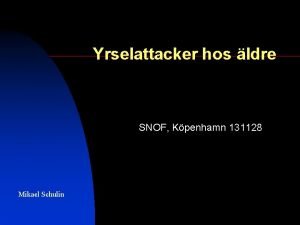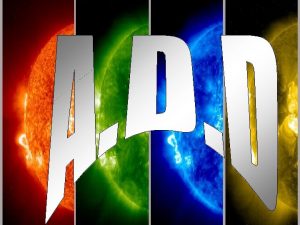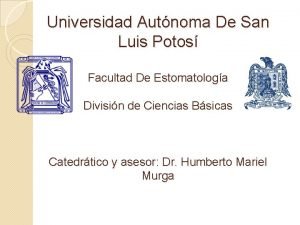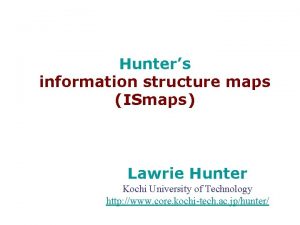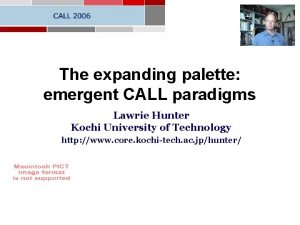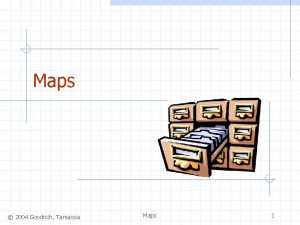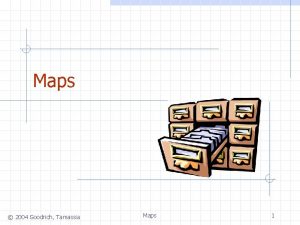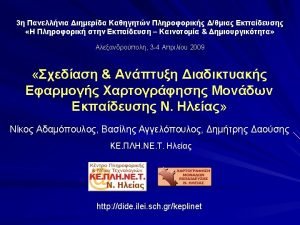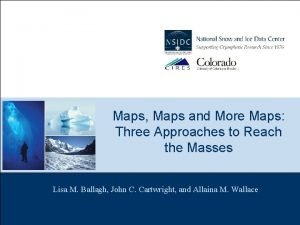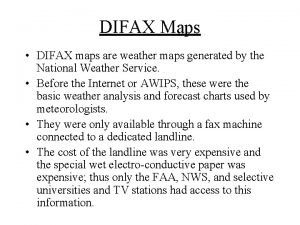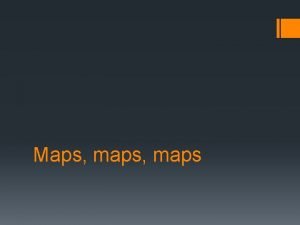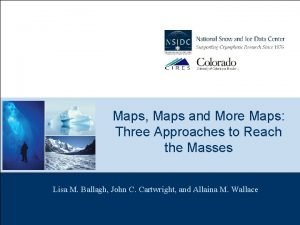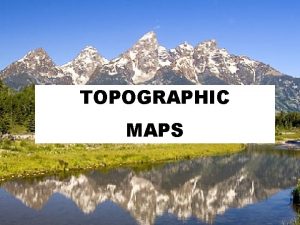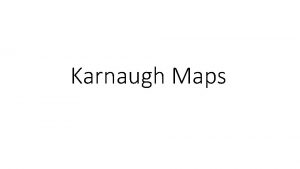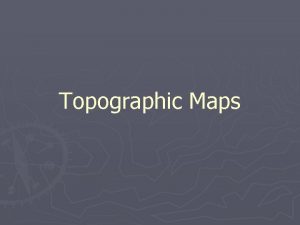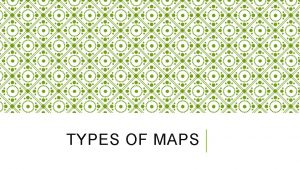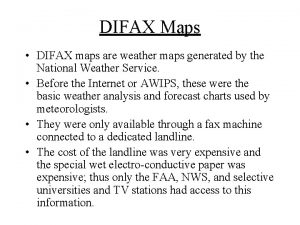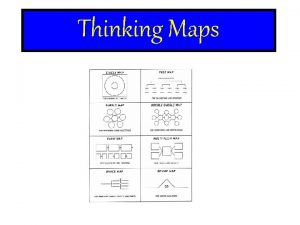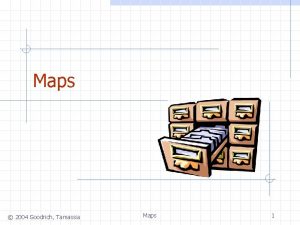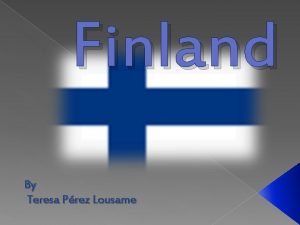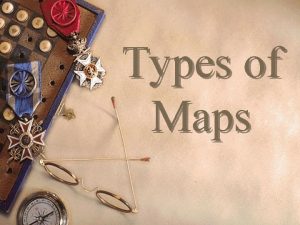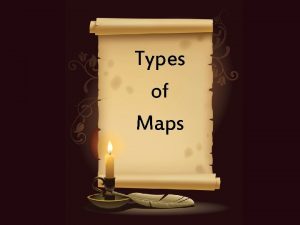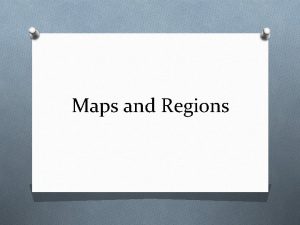Semiotic Integration Information Structure Maps Lawrie Hunter Kochi


















![hunter’s tools GENRES REGISTERS MOVES [a classification map] hunter’s tools GENRES REGISTERS MOVES [a classification map]](https://slidetodoc.com/presentation_image_h/35c13dc2d0a74d01fef10a0611bf90f0/image-19.jpg)























































- Slides: 74

Semiotic Integration: Information Structure Maps Lawrie Hunter Kochi University of Technology http: //www. core. kochi-tech. ac. jp/hunter/ lawrie_hunter@kochi-tech. ac. jp

Semiotic Integration: Information Structure Maps Lawrie Hunter Kochi University of Technology http: //www. core. kochi-tech. ac. jp/hunter/ lawrie_hunter@kochi-tech. ac. jp

Claim: Information maps, with textured links that represent information relationships, are a ‘good enough’ mapping of information structures in language and as such can enhance L 2 performance and reduce cognitive load even in L 1.

Claim: Information maps, with textured links that represent information relationships, are a ‘good enough’ mapping of information structures in language and as such can enhance L 2 performance and reduce cognitive load even in L 1. Next step: Incorporate links in e-document design as an alternative/adjunct to menus.

Principle 1: • content, and philosophy about content, must come FIRST

Mass amateurisation of everything: “. . . over the last fifteen years or so pretty much all media creation has started to be deprofessionalised. ” http: //www. plasticbag. org/archives/2003/09/ weblogs_and_the_mass_amateurisation_of_nearly_everything. shtml

Principle 1: • content, and philosophy about content, must come FIRST content philosophy task design materials design

Principle 1: • content, and philosophy about content, must come FIRST AKA “Tell me later what your computer can do. ” content philosophy task design materials design

Institution design Societal demands Learner needs Learning theory CALL scenario design flowchart Hunter (2001) http: //www. core. kochi-tech. ac. jp/hunter/CALLL/ Curriculum policy Objectives and Content domains Learner characterization Teaching practice Learner Virtual lab: www (distance ed) Methodologies and Content Classroom LL IT CMC-based CALL vs. Intelligent CALL (tool vs tutor) Multi-lab CALL lab characterization Learner characterization content domains budgets software scenario Unsupervised (tutor) Supervised (semi-tool) High software Low software High authoring Low software High teaching

Principle 2: • Learning language is learning a set of behaviors

Principle 2: • Learning language is learning a set of behaviors • These behaviors may be said to be rule-driven.

Principle 2: • Learning language is learning a set of behaviors • These behaviors may be said to be rule-driven. • But what are the rules?

Principle 2: • Learning language is learning a set of behaviors • These behaviors may be said to be rule-driven. • But what are the rules? • A number of grammars attempt to impose rules on the whole of language.

• However, language came before the rules. • This is why the lexical approach is proving so interesting.

• Similarly, information came before the idea of information system. • This is why learning objects are not well known to educators.

PRINCIPLE 3: Learners need to have a clear situating of what they are doing. • This calls for a simple, structured characterization of language and communication.

So how can we characterize what we as language teachers are doing?

So how can we characterize what we as language teachers are doing? In my work, I use GENRES, REGISTERS and MOVES.
![hunters tools GENRES REGISTERS MOVES a classification map hunter’s tools GENRES REGISTERS MOVES [a classification map]](https://slidetodoc.com/presentation_image_h/35c13dc2d0a74d01fef10a0611bf90f0/image-19.jpg)
hunter’s tools GENRES REGISTERS MOVES [a classification map]

hunter’s tools GENRES REGISTERS Genres allow us to talk about the type of information conveyed in any given utterance. This is the starting point for the L 2 learner. MOVES

hunter’s tools GENRES REGISTERS Systemic Functional Linguistics SFL talks about these genres: • • • Narrative: construct a pattern of events Procedure: tell how to do something Information report: present information Explanation: tell how and why things occur Exposition: argue a case Discussion: look at sides of an issue MOVES

hunter’s tools KUT’s genres GENRES REGISTERS At KUT, we have built our curriculum around these genres: • Description • Classification • Comparison • Sequence • Cause-effect (including inference) • Pro-con MOVES

KUT’s genres Critical Thinking Asahi Press 2001 2 nd year textbook 6 units (6 genres) in 2 quarters Thinking in English KUT Press 2004 A mapping workbook, companion to CT 6 units (6 genres) Extends CT to 4 quarters

KUT’s genres Textbooks as paper prototyping

hunter’s tools KUT’s genres GENRES REGISTERS MOVES . . . reflect information types (Mohan's (1986) knowledge structures) Classification Description Principle Process Evaluation Choice rather than speech act types such as SFL's text types. This allows us to use Hunter's information mapping as the graphic embodiment of what we are hearing/saying/reading/writing.

Hunter’s infomap links

Hunter’s infomap links Description

Hunter’s infomap links Description Classification

Hunter’s infomap links Description Degree comparison < big Classification

Hunter’s infomap links Classification Description Degree comparison < big Attribute comparison

Hunter’s infomap links Classification Description Degree comparison < big Contrast ! Attribute comparison

Hunter’s infomap links Classification Description Degree comparison < Attribute comparison big Contrast ! Sequence

Hunter’s infomap links Classification Description Degree comparison < Attribute comparison big Contrast ! Sequence Cause-effect

please study here

Hunter’s REGISTERS hunter’s tools GENRES REGISTERS allow a separation of language domains according to intention and situation MOVES

Hunter’s REGISTERS hunter’s tools GENRES REGISTERS MOVES • Here are the ad hoc (but definable) registers I talk about with my students:

Hunter’s REGISTERS hunter’s tools GENRES REGISTERS MOVES The registers of the non-technical world • Casual • Informal • Formal The registers of the technical world. • Casual technical – used in discussion of technical matters with engineer peers • Informal academic (used in presentations) • Formal academic (used in research papers and theses)

Hunter’s REGISTERS hunter’s tools GENRES REGISTERS MOVES The registers of the non-technical world • Casual • Informal • Formal The registers of the technical world. • Casual technical – used in discussion of technical matters with engineer peers • Informal academic (used in presentations) • Formal academic (used in research papers and theses)

hunter’s tools MOVES GENRES REGISTERS MOVES are characterizations of the purpose of a given utterance. MOVES

In Hunter's graduate technical writing course, MOVES include: – Attributing (a statement to a source, including other researcher, common knowledge. . . ). – Identifying an example/archetype. hunter’s – Generalizing tools – Summarizing GENRES REGISTERS MOVES – Reporting – Inferring – Claiming – Demonstrating – Establishing – Proving – Deducing – Predicting – Concluding

hunter’s tools GENRES MOVES REGISTERS

This presentation’s focus: integrating information symbols for iconic representation To support the second language reader, our information representation should be: -unambiguous -specific (granular enough) -non-fuzzy - iconic if possible

Question: Do Hunter’s infomap links have iconic status?

Question: Do Hunter’s infomap links have iconic status? hunter’s tools: iconic? i. e. Are they granular enough, and is their mapping coverage sufficient to constitute a pattern language? granular enough? sufficient coverage?

But aren’t there already mapping systems whose links have iconic status? other systems: iconic? granular enough? sufficient coverage?

But aren’t there already mapping systems whose links have iconic status? other systems: iconic? How about 1. Mind mapping? 2. Wurman’s LATCH? 3. Reason. able’s argument mapping? 4. “International” signage? 5. Rhetorical structure theory maps granular enough? sufficient coverage?

Tony Buzan’s mind mapping? Buzan: iconic? granular enough? Not iconic: -the links are all associations -i. e. zero granularity sufficient coverage?

R. S. Wurman’s LATCH? Wurman says there are just five ways to organize information: by location, alphabet, time, category, or hierarchy. These methods can be remembered by the acronym LATCH. Roads, towns, and bodies of water are best organized by LOCATION. Dictionaries, encyclopedias, and many collections of data, by ALPHABET. Museum exhibits and planning documents, by TIMEline. Department stores and Yellow Pages, by CATEGORY. And physical objects, by HIERARCHY -- from the largest to the smallest, from the densest to the least dense. Wurman: iconic? Arguably, LATCH is not a mapping. LATCH is also short on coverage. e. g. where is cause => effect here? granular enough? sufficient coverage?

Reason!able argument mapping? Reason!able makes software for mapping arguments. This design surpasses Horn’s Argument Mapping in granularity: the links are labeled to indicate the rhetorical device represented by the link. www. goreason. com Reason!able: iconic? granular enough? sufficient coverage? But a text label cannot achieve iconic status.

RST (rhetorical structure theory) mapping? Bill Mann’s Rhetorical Structure Theory (RST) uses various sorts of "building blocks" to describe texts. The principal block type deals with "nuclearity" and "relations" (often called coherence relations in the linguistic literature. ) www. sil. org/~mannb/rst/ granular enough? RST: iconic? sufficient coverage?

RST (rhetorical structure theory) mapping? Bill Mann’s Rhetorical Structure Theory (RST) uses various sorts of "building blocks" to describe texts. RST: iconic? granular enough? The principal block type deals with "nuclearity" and "relations" (often called coherence relations in the linguistic literature. ) www. sil. org/~mannb/rst/ But that is at the level of moves, and here we are talking about genres. sufficient coverage?

“International” signage? If we look at the conventions of signage, and those are not integrated, not, we will find a lack of granularity. int’l signage: iconic? granular enough? For example, Description and Classification links are always both single straight lines. sufficient coverage? At a glance, is this a description utterrance or a classification utterance?

Direct is best Crane controls: iconic? granular enough? sufficient coverage? Champion example of direct representation in an interface: crane controls. Thanks to Matt Jones, designer extraordinaire, www. blackbeltjones. com

Hunter’s infomaps: Based on experience: hunter’s tools: iconic? granular enough? sufficient coverage? When confined to the technical registers, 1) this system is granular enough and 2) has good enough coverage (80%+) of the information structures in technical document content to be a graphical pattern language.

This system is granular enough to be a graphical pattern language. Mohan's (1986) knowledge structures Classification Description Principle Process hunter’s tools: iconic? granular enough? Evaluation Choice < good sufficient coverage?

This system has good enough coverage (80%+) of the information structures in technical document content to be a graphical pattern language. hunter’s tools: iconic? granular enough? sufficient coverage?

Integrated semiosis: reducing Shannon-Weaver “noise” ‘noise’ = “factors which decrease the quality of the reception of a message” www. cultsock. ndirect. co. uk/MUHome/cshtml/introductory/fidelity. htm

Shell scenarios accessible from www. shell. com/home/

Shell scenarios accessible from www. shell. com/home/ NOT integrated semiosis; can you see that? The reader has to decode the info structure.

Mass amateurisation of everything: “. . . over the last fifteen years or so pretty much all media creation has started to be deprofessionalised. ” http: //www. plasticbag. org/archives/2003/09/ weblogs_and_the_mass_amateurisation_of_nearly_everything. shtml

Uses of Iconic Graphics as is e. g. in. ppt as markers of position in info structure

Uses of Iconic Graphics as is as markers of position in information structure e. g. in. ppt Of course iconic graphics can -reduce ‘noise’ -enhance info accessibility -reduce cognitive load

Uses of Iconic Graphics as markers of position in info structure as is e. g. in. ppt no big deal But PLAIN ENGLISH can do that. www. plainenglish. co. uk/ There is more potential to the notion of iconic graphics.

Uses of Iconic Graphics as markers of position in information structure as is e. g. in. ppt no big deal Reading text while referring to an info structure position sign is empowering in a synergistic way.

Learner tasks with info mapping text writing from maps summarizing controlling navigation

Learner tasks with info mapping text writing from maps summarizing controlling navigation

Learner tasks with info mapping text writing from maps summarizing controlling navigation in mapping tasks, limit the number of nodes this forces learners to identify main structures

Ocean thermal energy could be the wave of the future Noriyuki Yoshida The Daily Yomiuri 01 01 23 _____________________________________________________________________________ The experiment uses technology developed by Prof. Haruo Uehara and researchers at the science and engineering department of Saga University. It is hoped that the test will produce 1, 000 kilowatts of electricity, and it is expected that the technology will provide cost-efficient, environmentally friendly energy in the 21 st century. _____________________________________________________________________________ Thermal and nuclear power plants boil water into steam, which rotates turbines to generate electricity. The basic mechanism of the OTEC is the same, but instead of water, the OTEC process uses ammonia, which is more energy efficient because it evaporates at a much lower temperature than water. e. g. Take a tech article, _____________________________________________________________________________ First, liquid ammonia is heated with water of 20 C to 30 C drawn from near the surface of the Indian Ocean and converted into steam. Then the ammonia steam rotates turbines and generates electricity. Finally the steam is cooled with 6 C deep-sea water and converted back to liquid. remove topic and conclusion sentences from each paragraph, _____________________________________________________________________________ In thermal power generators, the temperature difference between water and steam is about 500 C, which means the steam is packed with energy. But the temperature difference in the OTEC system is only about 20 C, so the energy from the ammonia steam is relatively low. To overcome this, OTEC utilizes a process developed by Uehara to improve the heating and cooling of the ammonia and use water as a solvent. have learners map the article with 15 nodes or fewer. _____________________________________________________________________________ The OTEC system's heat efficiency rate (the percentage of generated power compared to the total energy poured into the system) has reached a high of 5. 2 percent under the Uehara Cycle. This is much lower than 40 -percent level in thermal power generation and the 50 to 60 percent efficiency of power generation using a combination of thermal systems and gas. _____________________________________________________________________________ Uehara said, "Because the source of heat is seawater, the energy cost is zero. The overall costs of the power generation processes are not much higher than those of thermal generation and other forms, " he said.

Use the infomap links to map the text. Classification Description Degree comparison < Attribute comparison big Contrast ! Sequence Cause-effect

Power generating systems General process: Boil a liquid seawater heat OTEC plants zero energy cost Make steam boil NH 3 Rotate turbines boil H 2 O steam 20 C steam 500 C low power high power Generate electricity fossil or N-heat older type plants high energy cost hunter systems

Learner tasks with info mapping text writing from maps summarizing to control reader navigation, the learner must articulate the main structures of her information controlling navigation in hypertext authoring, make navigation control the task

Claim: These information maps, with their textured links that represent information relationships, are a ‘good enough’ mappingof information structures in language and as such can enhance L 2 performance and reduce cognitive load even in L 1.

Claim: These information maps, with their textured links that represent information relationships, are a ‘good enough’ mappingof information structures in language and as such can enhance L 2 performance and reduce cognitive load even in L 1. Next step: Incorporate links in e-document design as an alternative/adjunct to menus.

Thank you for your retention. And ‘thanks in advance’ for trying this concept. You can soon download this. ppt from http: //www. core. kochi-tech. ac. jp/hunter/semint/ Lawrie Hunter Kochi University of Technology http: //www. core. kochi-tech. ac. jp/hunter/ lawrie_hunter@kochi-tech. ac. jp
 Water metro
Water metro Kv2 kochi
Kv2 kochi Dlf riverside floor plan
Dlf riverside floor plan Joe hunter treasure hunter
Joe hunter treasure hunter Defence travel booking
Defence travel booking Dawn lawrie
Dawn lawrie Jason lawrie
Jason lawrie Jason lawrie
Jason lawrie Semiotic landscape examples
Semiotic landscape examples Ogden and richards semantic triangle
Ogden and richards semantic triangle Example of a myth
Example of a myth Julia kristeva semiotic
Julia kristeva semiotic Semiotic triangle
Semiotic triangle Reittihaku google maps
Reittihaku google maps Three dimensions of corporate strategy
Three dimensions of corporate strategy Backwards intergration
Backwards intergration Simultaneous integration meaning
Simultaneous integration meaning Structure-measure: a new way to evaluate foreground maps
Structure-measure: a new way to evaluate foreground maps Portal-oriented application integration
Portal-oriented application integration Information-oriented application integration
Information-oriented application integration Information-oriented examples
Information-oriented examples Alabama hunter education
Alabama hunter education Isportsman fort gordon
Isportsman fort gordon Fracture cupule radiale
Fracture cupule radiale What is the last
What is the last Systematic instruction hunter model
Systematic instruction hunter model Junior score
Junior score Hunter method plumbing
Hunter method plumbing Picthunter
Picthunter Mrs hunter day
Mrs hunter day Posterior arch vein
Posterior arch vein Boyd perforator
Boyd perforator Name three behaviors of a responsible hunter.
Name three behaviors of a responsible hunter. Hunter maclean
Hunter maclean H hunter handsfield
H hunter handsfield Hunter under saddle judging
Hunter under saddle judging Hunter newby
Hunter newby Hunter shively
Hunter shively David hunter antropologi
David hunter antropologi Plexus de rashkow
Plexus de rashkow Teacher accountability
Teacher accountability Mandingo interracial
Mandingo interracial Darko odic
Darko odic Instructional design blueprint template
Instructional design blueprint template Hunter criteria
Hunter criteria Leidos sea hunter
Leidos sea hunter Schmidt hunter
Schmidt hunter Riley rink schedule
Riley rink schedule On the sidewalk bleeding by evan hunter
On the sidewalk bleeding by evan hunter Score hunter junior odpowiedzi
Score hunter junior odpowiedzi Hunter mountain, twilight
Hunter mountain, twilight Electric circuits grade 6
Electric circuits grade 6 La palette humérale définition
La palette humérale définition Lisa hunter dwp
Lisa hunter dwp Dunbar-hunter expedition map
Dunbar-hunter expedition map Alabama hunter education
Alabama hunter education Trend report examples
Trend report examples Blind man and the hunter
Blind man and the hunter Strzelectwo terenowe
Strzelectwo terenowe Hunter's seven steps of lesson planning
Hunter's seven steps of lesson planning Kirsty hunter
Kirsty hunter Hunter safety lab
Hunter safety lab Hunter college fire
Hunter college fire Canal de hunter anatomia
Canal de hunter anatomia Martin v hunter's lessee
Martin v hunter's lessee Gateway metro housing boston.org
Gateway metro housing boston.org Hunter toh staff
Hunter toh staff Madeline hunter model of mastery learning
Madeline hunter model of mastery learning Hunter house college
Hunter house college Elizabeth loftus biography
Elizabeth loftus biography Brian foote hunter college
Brian foote hunter college Brian foote hunter college
Brian foote hunter college Vestibulopati
Vestibulopati Adhd hunter theory
Adhd hunter theory Fosa iliaca externa
Fosa iliaca externa
